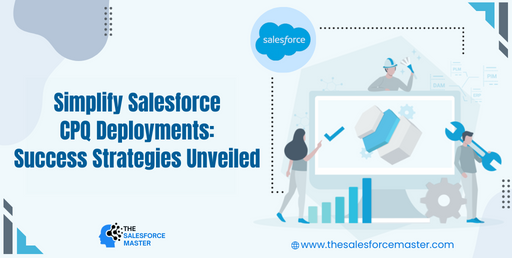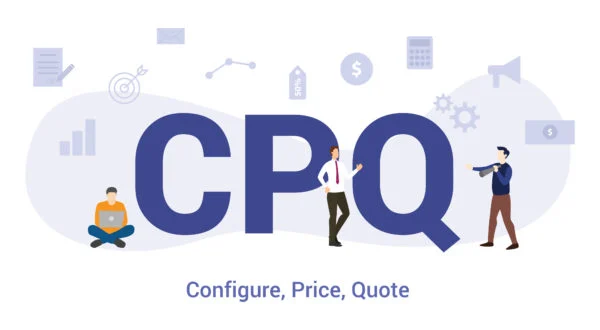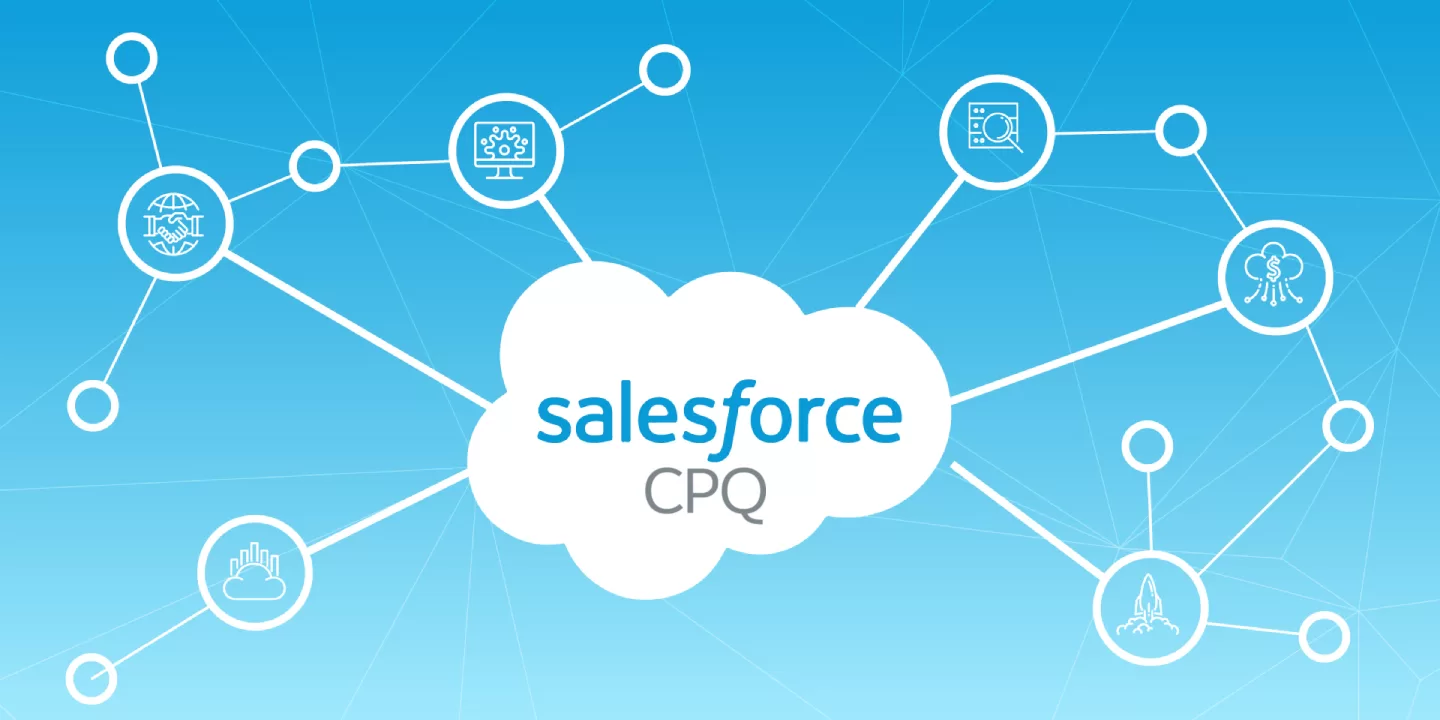
Salesforce CPQ (Configure, Price, Quote) is a useful tool that makes it easier to create correct quotes for things you’re selling. It’s part of Salesforce Revenue Cloud and helps companies improve their sales process, make more money, and give customers a better experience.
But, setting up, building, and keeping Salesforce CPQ working well can be hard. This goes for the people who develop it, manage it, and specialize in CPQ. In this article, we look at the main problems that come up when using CPQ and share the best ways to deal with them.
Challenge: Data And Dependencies
Deploying CPQ configuration data is more complicated than deploying metadata because there are many connections and relationships between data records. 
When you move the same record between different Salesforce orgs, the unique IDs assigned by Salesforce can change. If you don’t match these IDs correctly, it can result in problems like having duplicate records, which can mess up the integrity of the data, cause issues with mapping data, lead to missing data, and make it challenging to ensure that all the necessary dependencies are included in the deployment.
Solution
Giving each record a special ID called an “external” ID is really important in Salesforce. This ID helps in a bunch of useful ways:
1. Connecting Records: You can link records between different Salesforce setups or even other systems.
2. Getting CPQ Data Right: It helps in accurately putting in place CPQ (Configure, Price, Quote) details like product info, prices, and rules.
3. Easy Connections with Outside Systems: It makes it easier to work with other systems like ERPs or financial platforms.
4. Keeping Things Consistent: It ensures that everything stays the same across all setups and systems.
5. Keeping Data Safe: It makes sure that data stays correct and doesn’t get messed up with duplicates or errors.
6. Quick and Reliable Setup: It speeds up setting up CPQ and makes releasing new stuff more reliable.
7. Less Chance of Mistakes: It cuts down on the chances of people making mistakes with the data.
So, using external IDs is like giving each record a passport that makes it easy for them to travel and work well in different places.
Challenge: Deploying With Incompatible Tools
Deploying changes in CPQ (Configure, Price, Quote) is different from deploying regular settings or information. The tools typically used for deploying regular data or metadata, such as change sets, DX (Salesforce Developer Experience), or other third-party solutions, don’t work well for CPQ.
On the other hand, tools designed for deploying data are also not a perfect fit for CPQ. While it’s possible to deploy CPQ configuration using these tools, the process is often complicated and not user-friendly. For teams that don’t use any deployment tools, manually documenting every change and recreating them in the target environment becomes a tedious, time-consuming task prone to errors.
Solution
Picking a tool designed for CPQ (Configure, Price, Quote) can make things a lot easier when setting it up. For instance, it can automatically find and preserve connections when moving changes between different setups. This eliminates the need for manually checking and reduces the chances of mistakes. A user-friendly interface that displays the differences in configurations between setups helps teams feel more sure about what changes have been done and gives them a clear view of everything.
Challenge: CPQ That’s Disconnected from DevOps
Using one-size-fits-all tools for configuring prices and quotes (CPQ) in Salesforce can create problems for development teams. It often forces teams to work on CPQ separately from other system changes, making it harder to keep track of changes, work together, and manage updates. This split can disrupt the smooth flow of work and make it challenging to take full advantage of the benefits of DevOps, slowing down the deployment of changes and promoting isolated working styles. Solution
Solution
To make things easier for a team working with Salesforce CPQ (Configure, Price, Quote), you can use tools that help with releasing and updating the system in a smooth way, following DevOps practices. This means deploying both the data and the settings at the same time. This helps Salesforce teams save a lot of time when updating CPQ, just like they do when making changes to the system’s settings.
Another helpful approach is using automation. This means setting up tools that keep an eye on any changes happening in CPQ, whether it’s settings or processes. This way, no matter how many people are working on CPQ, the team can easily track and manage what’s happening without missing anything important.
Final Thoughts
If you want to make CPQ deployments easier, it’s essential to use a tool that can:
1. Handle external IDs smoothly.
2. Integrate CPQ into the same DevOps process used for metadata development.
3. Support deploying Salesforce data and metadata together.
4. Give teams clear visibility into complex configuration changes.
5. Help teams identify and deploy dependencies effectively.
By following these tips, Salesforce teams can avoid mistakes, work more efficiently, and provide accurate quotes and pricing to customers. To learn more about simplifying CPQ release management and unlocking the full potential of CPQ for Salesforce, you can download Gearset’s free whitepaper on Salesforce CPQ Deployments.
For more updates about Salesforce, visit us on www.thesalesforcemaster.com

